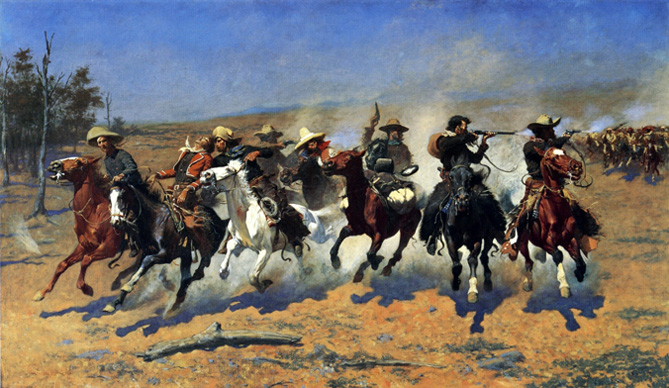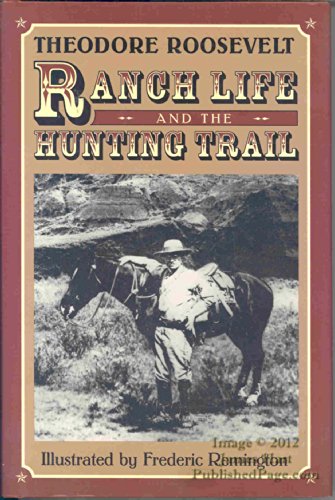
A Dash for the Timber circa 1889 courtesy http://hoocher.com/Frederic_Remington/Frederic_Remington.htm.
With financial support from his uncle, Remington was able to pursue art fulltime. His first commercial success was a front page illustration on the cover of Harper's Weekly in 1886. The same year, the magazine sent him to Arizona on assignment to track down Geronimo. While Remington didn't find the Apache chief, he did take many photographs and draw many sketches valuable for later paintings.

Harpers Weekly 1886 courtesy https://www.pinterest.com/pin/158892693079969106/.
Remington had a big break when he was commissioned by Theodore Roosevelt to complete 83 illustrations for his book Ranch Life and the Hunting Trail (1888), which was serialized by The Century Magazine. A full colour oil painting called Return of the Blackfoot Party, exhibited at the National Academy of Design, was so well received that the New York Herald said that "one day Remington would be listed among our great American painters".

Remington seemed to have a knack of being at the right place at the right time. In 1890, he arrived in South Dakota, shortly after the Massacre at Wounded Knee, a tragedy where 150 Sioux, mainly women and children, were murdered. His 1898 painting The Parley, based on this massacre, has a realist quality.

Remington was also there when the Spanish-American War broke out, acting as an official war correspondent. When Theodore Roosevelt and his Rough Riders returned from the battlefield, Remington presented him with the gift of a sculpture, The Bronco Buster, a piece which launched the genre of cowboy sculptures.

Remington documented the Western mining prospectors, naming his painting The Goldbug, perhaps because of the "gold fever" that prospectors were afflicted with. The painting was featured on a U.S. Stamp in 1898.

No comments:
Post a Comment